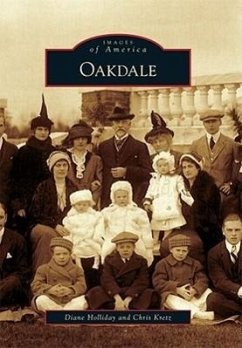When Oakdale began in the 1680s, it was a woodland wilderness. Following the American Revolution, farmers cleared and worked the land. "Oyster King" Jacob Ockers and his men followed, working the bay. The railroad ushered in wealthy sportsmen to the South Side Sportsmen's Club. Some of these men, like William K. Vanderbilt and William Bayard Cutting, stayed and built palaces for their families. The scene changed starting in the 1920s, bringing flappers, artists, bootleggers, and Broncho Charlie, the last living Pony Express rider. The former mansions of the well-to-do now served as homes to a military academy and a religious cult, while still retaining their turn-of-the-century style.
Bitte wählen Sie Ihr Anliegen aus.
Rechnungen
Retourenschein anfordern
Bestellstatus
Storno

